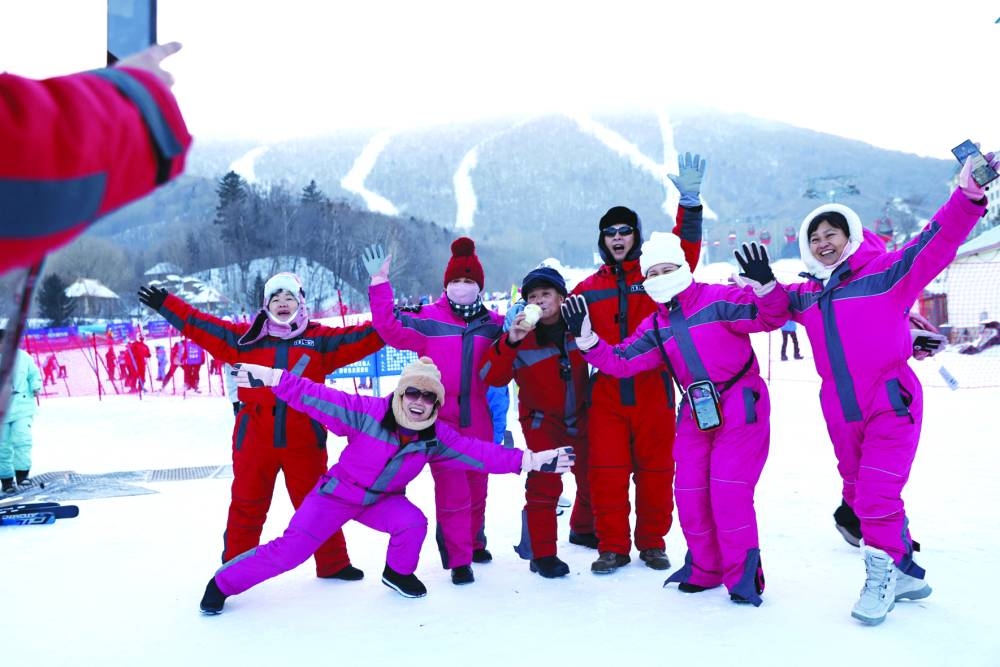Winter tourism in China has rebounded sharply in a welcome boon to economically weak regions in the north struggling to recover from years of pandemic gloom, and providing a boost to sluggish domestic consumption.
Destinations in China’s northeastern rust-belt, such as the city of Harbin in Heilongjiang province, have attracted droves of domestic visitors from warmer climes in the past weeks. The growing popularity of winter sports has also drawn skiers and snowboarders to the slopes of Xinjiang in northwestern China.
It was the first time since 2019 before the arrival of Covid-19 that many Chinese tourists have enjoyed their winter vacations without worrying about lockdowns and infections.
Data from booking platform Ctrip showed pre-ordered year-end ski passes doubling on a weekly basis, double the traffic the year before, while ski group tour bookings grew 70% weekly, nearly 30% more than the previous year. An official tourism report forecast 25-30% more tourists this season compared to the last, and numbers could exceed 400mn people for the first time, potentially generating as much as 550bn yuan ($76.8bn) in revenue. In its five-year tourism development plan, China has called for a boost in “ice and snow tourism” from opening more ski resorts to tapping local culture and traditions. At an annual agenda-setting economic conference in December, the government said it would make efforts to spur domestic demand this year.
“It is necessary to stimulate potential consumption, expand profitable investment, and form a virtuous cycle in which consumption and investment promote each other,” it said.
China, which has set an economic growth target of around 5% for 2023, has grappled with multiple headwinds including mounting local government debt, a still ailing housing market and tepid demand at home and abroad. Faced with an uncertain economy, consumers have tightened their belts.
In China’s northeast, Harbin has become a darling destination for holidaymakers, as its popularity on social media soared and state media extended coverage on its burst of tourism. The city is hosting a months-long festival showcasing sculptures built from ice blocks harvested from a frozen river, luring 3.05mn tourists to the city during the New Year holidays in one of the world’s largest snow and ice sculpture festivals.
Yabuli Ski Resort Finance Director Jin Honglan told Reuters that visitors at the resort have doubled from previous years, and tourist spots around the city are now bursting with people. “Next year and the year after that, (it) will be even more popular. Everyone is feeling the enthusiasm for skiing,” she said.
Heilongjiang, the once resource-rich province that fuelled industrial development in coal, minerals and timber, has rolled out measures to “transform the advantages of its ice and snow resources” and turn itself into an international winter tourism destination, according to the state-controlled People’s Daily.
Yueyua, a 50-year-old tourist from Ningbo city in the eastern Zhejiang province, said winter sports have gained popularity as awareness increased.
“There is a lot of publicity, different types of media coverage, bloggers, things like that,” the lady, donning a lilac-coloured ski suit, said. In line with the winter tourism rebound, demand for accommodation has surged.
Tourists have even gone on social media to complain about price gouging after some homestays in a rural part of Heilongjiang famed for its snow landscapes charged 3,000 yuan ($419) a night for just two mattresses on the floor.
Miles west, at a ski resort in northwestern Xinjiang region, this winter was “obviously more lively” than in previous years, an executive at Keketuohai International Ski Resort told People’s Daily, saying that they expected to receive 300,000 tourists this season, having greeted 2,000 on average every day, since opening its doors for the season in October.

Skiers pose for pictures at the Yabuli ski resort in Harbin, Heilongjiang province, China.
